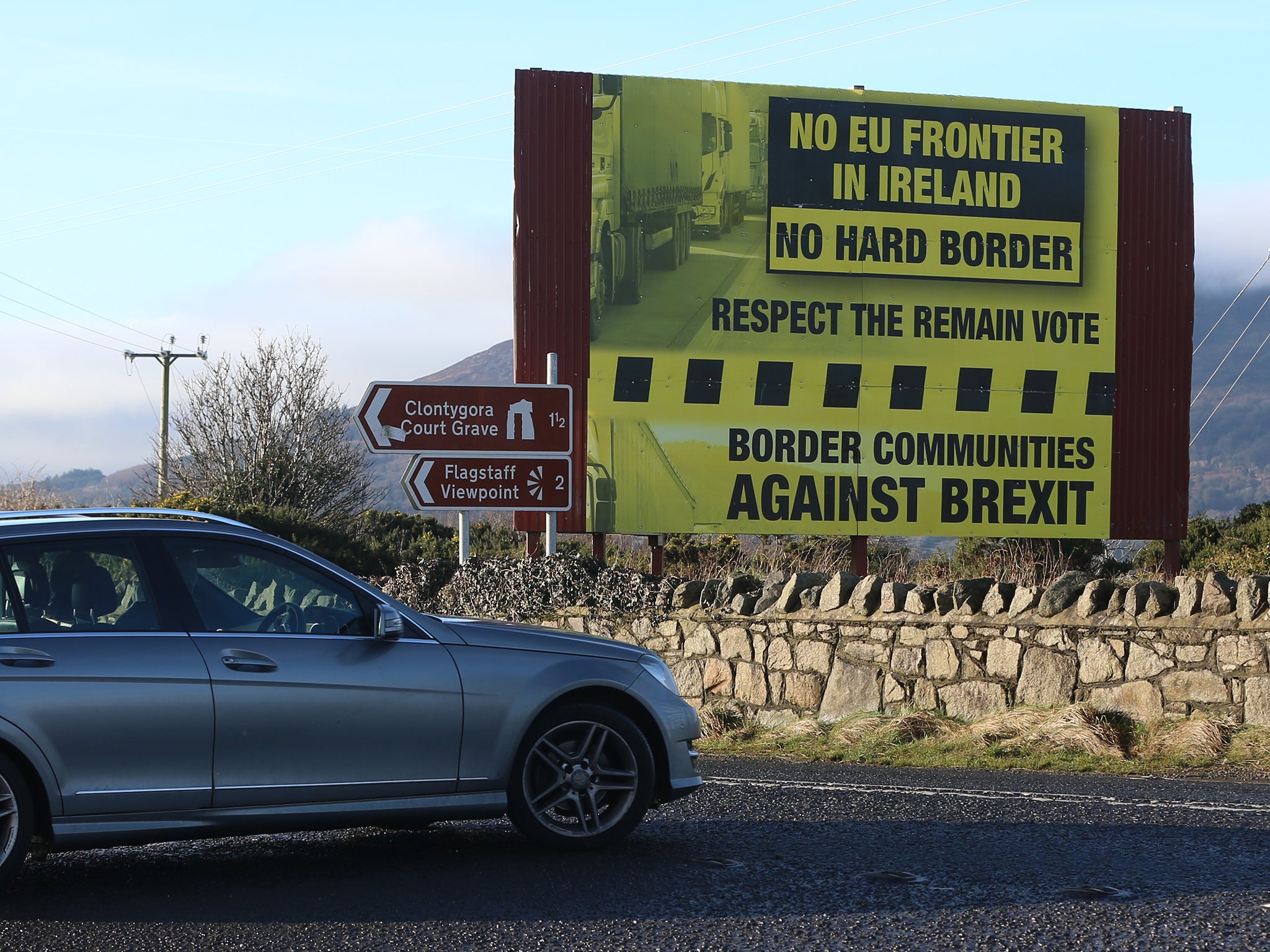‘Technology’ cannot make a hard border in Ireland soft
Brexiteers are citing an analysis done for the European Parliament to explain how an open border between north and south in Ireland could work – but have they actually read the report?


Can technology square the Irish circle? We all know what the Government wants: an open border between Northern Ireland and the Irish republic, but with the UK outside the European Union’s customs union. It seems an impossible task, for leaving the customs union would require customs checks at the only land border, post-Brexit, between the UK and the EU.
The proposition from pro-Brexiteers is that technology is the answer: systems of checks that would not require any physical impediment at the border: no customs officials and no barriers. People and vehicles could cross from one side to the other, as now, without stopping.
This is what the Prime Minister advocated in her Mansion House speech. And we are told that this is possible on no less an authority than a detailed analysis done for the European Parliament. Its report is entitled: “Smart Border 2.0: Avoiding a hard border on the island of Ireland.” Dominic Lawson cited it in his most recent Sunday Times column; since then pro-Brexit MPs such as Alex Burghart (Conservative) on BBC 2’s Daily Politics, and Kate Hoey (Labour) questioning Philip Hammond in Parliament, have also said that it solves the Irish border problem.
Except that it doesn’t. The text of the 46-page report does not deliver what its title implies – not unless you bend the definition of “hard border” beyond recognition. Either Lawson, Burghart and Koey have not actually read the report, or they have misunderstood or misrepresented it.
For a start it explodes the idea that the Norway-Sweden or US-Canada borders are completely frictionless. Yes, technology can speed things up via such things as electronic customs declarations made in advance. But there are still 14 manned customs posts between Sweden and Norway, covering all the major roads. The report says: “Most goods traffic travelling across the border are cleared, on average, within three to nine minutes, with longer waiting times at peak periods.” And remember: Norway is part of the Single Market (though not customs union). The UK proposes being outside both.
As for the US-Canada border, there are 39 border posts to check 95 per cent of all cross-border trade. Even with the latest electronic technology, and FAST, the “Free and Secure Trade Program”, to clear “low risk commercial goods” as fast as possible, trusted traders wait an average of 15.6 minutes to cross the border. (Traders without FAST clearance wait 81 minutes.)
So even these “smart borders” as the report calls them, have border guards, barriers and electronic surveillance, including CCTV and number-plate recognition systems. This is because “smart borders recognise that people and goods carry different risks and so separate these flows so they can be managed differently”. Thus “smart borders” are very different from open borders.
What, then, are the lessons for Ireland? The report makes a number of proposals for the border post-Brexit. These include:
• Passport controls for people who are neither UK nor Irish citizens, and therefore not covered by the Common Travel Area provisions that allow UK and Irish citizens to travel freely between the two countries. UK and Irish citizens would be cleared by automatic machines at the border using RFID – Radio Frequency Identification – technology to check “enhanced drivers’ licences”
• At least two lanes in each direction at major road crossings: a “free movement lane” for travellers covered by the Common Travel Area rules and the machine-readable documents to prove it; a second lane for everyone else.

• Physical barriers and CCTV for road traffic. Trusted traders would register on a database of “Authorised Economic Operators”, and apply for a “simplified export/import declaration”. The report describes how this would work: “At the border the mobile phone of the driver is recognised/identified and a release note is sent to the mobile phone with a permit to pass the border opening the gate automatically.” Other traders would have to stop for a conventional customs check.
The report suggests that time can be saved “by having passport controls only being undertaken by the jurisdiction being entered.” So one set of controls, not two – but a system of physical controls nonetheless.
One thing the report does not cover, but is highly relevant, is agriculture. The EU has strict rules requiring the inspection of milk, eggs, meat and other food entering the customs union. If the UK is not part of that Union, then those rules should be applied at the Irish border. The Prime Minister wants small traders – implicitly, most farmers on both sides of the border – to be exempt from controls, and hence for their produce not to be inspected. Maybe the EU will accept this. But maybe it won’t: I’m not sure I would bet too many euros on Theresa May getting her way, while demanding the right to import chlorinated chickens from the US.
Now, does all this add up to a “hard border”? The definition of “hard” is, perhaps, open to argument. But what is clear is that the “Smart Border 2.0” proposals do involve physical infrastructure and border guards. This regime would be very different from the completely open border that resulted from the Good Friday Agreement. That can only be retained if the UK concludes a wide-ranging customs union agreement with the EU.
The fundamental choice – open border plus customs union deal, or physical border with no customs union deal – remains.
Join our commenting forum
Join thought-provoking conversations, follow other Independent readers and see their replies
Comments
Bookmark popover
Removed from bookmarks